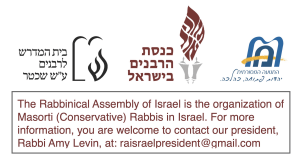
The Ark of the Covenant (aron ha-‘edut) is the first item on the list of furnishings that the Israelites were commanded to construct in preparation for setting up the Tabernacle (mishkan).
The task of that piece of furniture is to store and safeguard the sign of the covenant between the Eternal and His people. Some of the classical commentators say that the reference was to the stone tablets of the Ten Commandments, while other contend that it was the first Torah scroll, and a third group is of the opinion that both the tablets and a Torah scroll were in that Ark.
One might have thought that the idea was that if there were any doubt what is written in the Torah, it would be easy to gain access to the original in the Ark and find out. But that is not the case!
Over the Ark was a very heavy cover, the kapporet, made of thick gold. It was difficult to remove the kapporet in order to get to what was inside the Ark. And as if that were not enough, on top of the kapporet were two winged figures of keruvim (traditionally called “cherubs” in English), signaling a “do not enter” zone.
In order to make space for multiple interpretations and disputes, the Torah closed off, eliminating the possibility of examining its precise wording.
